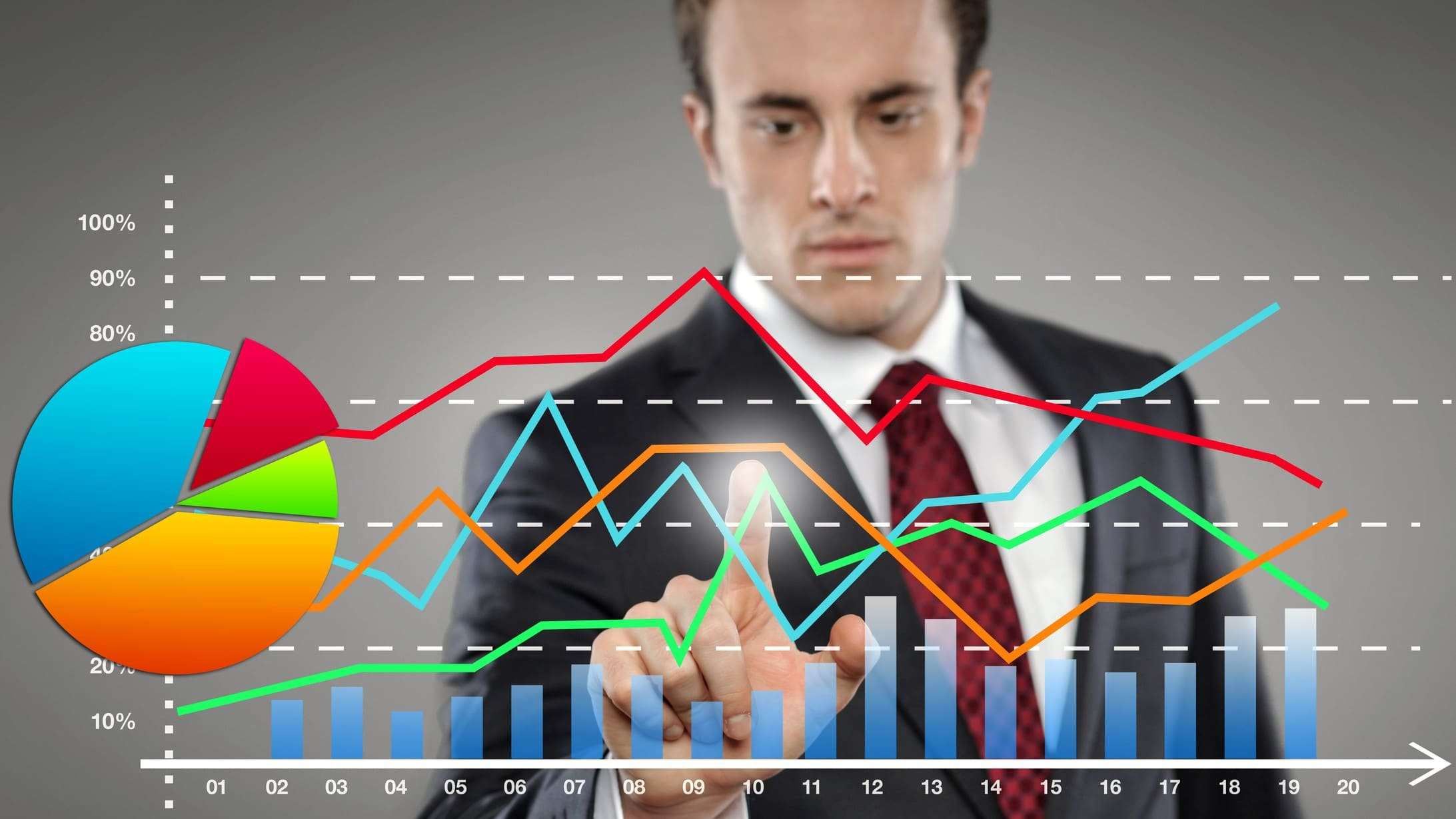Contents:

In https://traderoom.info/ 14, we can easily see that only Factory A uses Mango, only Factory B uses Pineapple, and only Factory C uses Grape. By comparing sizes of the stacked sections of the bars, we can also see Factory A uses very few Mango candies, and Factory B uses a lot of Pineapple candies. This approach helps show that we might also have a problem with the Red Candy Apple flavor, since it meets our requirement of 18 pieces per bag, but just barely. Each bag has 100 pieces of candy and the count for the five flavors has been collected for each bag. The goal is for the bags to have nearly equal counts for each flavor, meaning we expect to have roughly 20 pieces of candy for each flavor in each bag.

A horizontal bar graph contains data that’s displayed horizontally using rectangular bars that represent a measure of data. The rectangular bars start and extend from the side y-axis, In this case, the x-axis allows users to measure the length of the bars against specific levels of value inscribed on it. Bar graphs can be created with vertical bars, horizontal bars, grouped bars , or stacked bars . Except that the bars are not set side-by-side instead of stacked on top of the other . The total height of the bars represents the full value of the category.
Bar chart : Definition and Examples | BusinessQ
The bar chart displays data using a number of bars, each representing a particular category. The height of each bar is proportional to a specific aggregation . The categories could be something like an age group or a geographical location. One axis of the chart shows the specific categories being compared, and the other axis represents a measured value.
AG Mortgage Investment Trust, Inc. (NYSE:MITT) Q4 2022 Earnings Call Transcript – Yahoo Finance
AG Mortgage Investment Trust, Inc. (NYSE:MITT) Q4 2022 Earnings Call Transcript.
Posted: Sun, 26 Feb 2023 13:33:27 GMT [source]
https://forexdelta.net/s do not have gaps between bars, while bar charts do. Alternatively, a stacked bar chart stacks bars on top of each other so that the height of the resulting stack shows the combined result. Stacked bar charts are not suited to data sets having both positive and negative values. A range bar graph represents a range of data for each independent variable. Temperature ranges or price ranges are common sets of data for range graphs. Unlike the above graphs, the data do not start from a common zero point but begin at a low number for that particular point’s range of data.
Bar Graph vs. Bar Chart
Examples include state or country, industry type, website access method , and visitor type . Some categorical variables have ordered values, like dividing objects by size . A bar chart is used when you want to show a distribution of data points or perform a comparison of metric values across different subgroups of your data.
Some bar graphs present bars clustered in groups of more than one, showing the values of more than one measured variable. A bar graph is a chart that uses bars to show the differences and similarities between categories of data. Discover the definition, types, and examples of bar graphs, as well as how to create a bar graph in this lesson. Two key differences between histograms and bar charts are the gaps between bars and the types of data.
They also require minimal labeling or legend information compared to other types of tables. Bar charts are one of the most common ways to display information in a visual format, so it’s a popular choice in all kinds of media. Most business presentations have at least one of them in the mix and they are scattered throughout most high school textbooks. That’s why the ability to comprehend and use charts is a basic skill for modern business leaders. Other times, the values may be an average, total, or some other summary measure computed separately for each group. In the following example, the height of each bar depicts the average transaction size by method of payment.
Then mark the data categories on the vertical axis and the values on the horizontal axis. Bar graphs take different forms depending on the type and complexity of the data they represent. They can be as simple, in some cases, as two bars, such as a graph representing the vote totals of two competing political candidates.
A Complete Guide to Funnel Charts
All visualizations can be set up to show data limited by one or more markings in other visualizations only . Another alternative is to set up a bar chart without any filtering at all. See Limiting What is Shown in Visualizations for more information.
- Bar graphs have an x-axis and a y-axis and can be used to compare one or more categories of data.
- The primary purpose of the bar chart is to show viewers a visual representation of the comparison of related data points.
- In a pictogram chart, each category’s value is indicated by a series of icons, with each icon representing a certain quantity.
- For example, in a species graph, the number of species representatives can be indicated by the bar length.
Look up any word in the dictionary offline, anytime, anywhere with the Oxford Advanced Learner’s Dictionary app. We’ve created a new place where questions are at the center of learning. DisclaimerAll content on this website, including dictionary, thesaurus, literature, geography, and other reference data is for informational purposes only. Sort the categories, so that the highest category is on the left, except where there is a natural order to the data (e.g., age categories).
A stacked bar chart stacks bars representing different groups or segments on top of each other, with the height of the resulting bar showing the aggregate result of these groups. This procedure works well for datasets with exclusively positive values, but you should note that stacked bar charts aren’t good at depicting a mix of positive and negative values. A bar chart or bar graph presents data with rectangular bars at heights or lengths proportional to the values they represent. The bars can be vertical or horizontal, though they’re usually vertical. A bar chart is a way of summarizing a set of categorical data (continuous data can be made categorical by auto-binning).

Once you have completed the https://forexhero.info/ graph, you can make updates and adjustments by changing the values in the spreadsheet. You can also create simple bar graphs using free online tools such as Meta Chart and Canva. While histograms are similar in appearance to bar graphs, they represent data in a different way. Grouped bar graphs, also called clustered bar graphs, represent discrete values for more than one item in the same category.
Alternatively, if we move the different subgroups’ bars to the baseline, the resulting chart type is the grouped bar chart, seen on the right. We also use the grouped bar chart when we compute statistical summary measures across levels of two categorical variables. First and foremost, make sure that all of your bars are being plotted against a zero-value baseline. Not only does that baseline make it easier for readers to compare bar lengths, it also maintains the truthfulness of your data visualization. An alternative method of presenting more complex information is through a so-called ‘stacked bar chart’.
Software usually allows users to create either vertical or horizontal bar charts, as well as add custom features to a bar chart. Histograms are used with continuous data; bar charts are used with categorical or nominal data. See the “Bar charts and types of data” section below for more detail. Our comprehensive online glossary has guides to lots of related terms such as chart, trend, securitiesand technical analysis.
Visualization tools
When presenting data visually, there are several different styles of bar graphs to consider. Because each column represents an individual category rather than intervals for a continuous measurement, gaps are included between the bars. Also, the bars can be arranged in any order without affecting the data.

The last graph is another graph with two groups of data, but they are presented side by side instead of stacked. Initially, the bar chart got made with pen and paper, but nowadays, you can use online tools. One such easy-to-use online tool is the EdrawMax Online, one of the best diagramming tools.
Unlike the bar graph, the price bar chart only covers relevant prices and does not extend all the way up from the x-axis. Certain aspects of a bar graph separate them from other types of graphs and charts. The purpose of a bar graph is to convey relational information quickly in a visual manner. The bars display the value for a particular category of data. The following divided bar graph shows the percentage of men, women, and children who visited a zoological park out of the total people.
